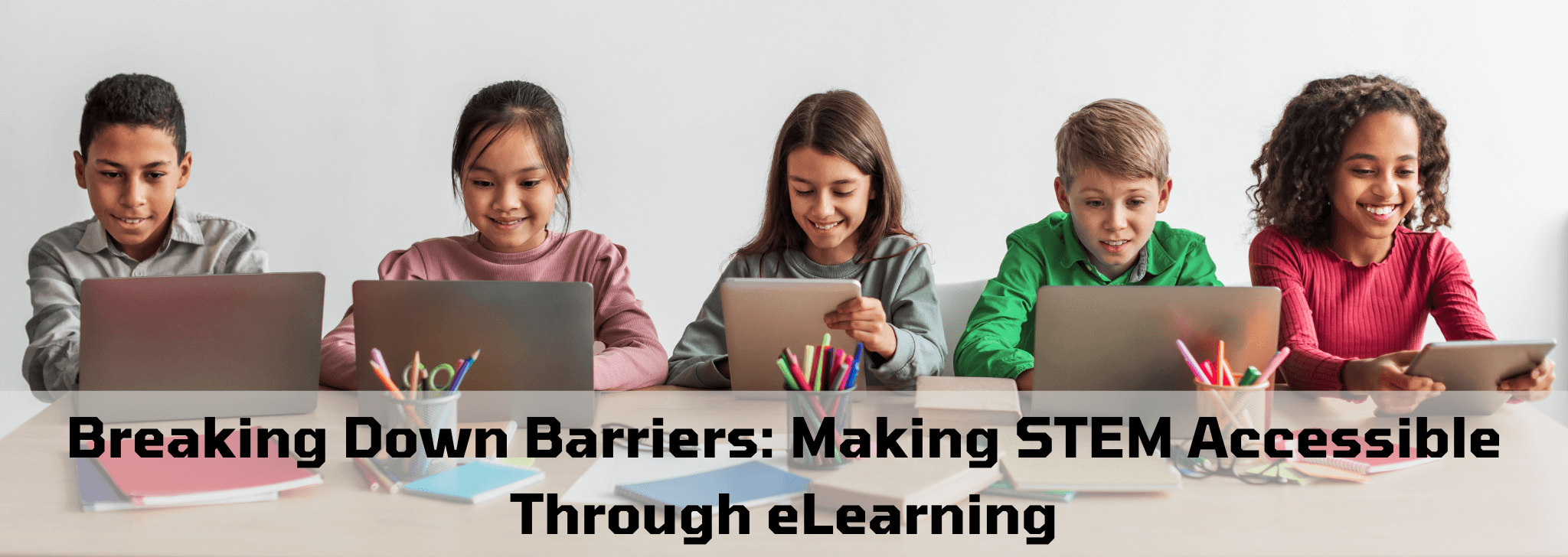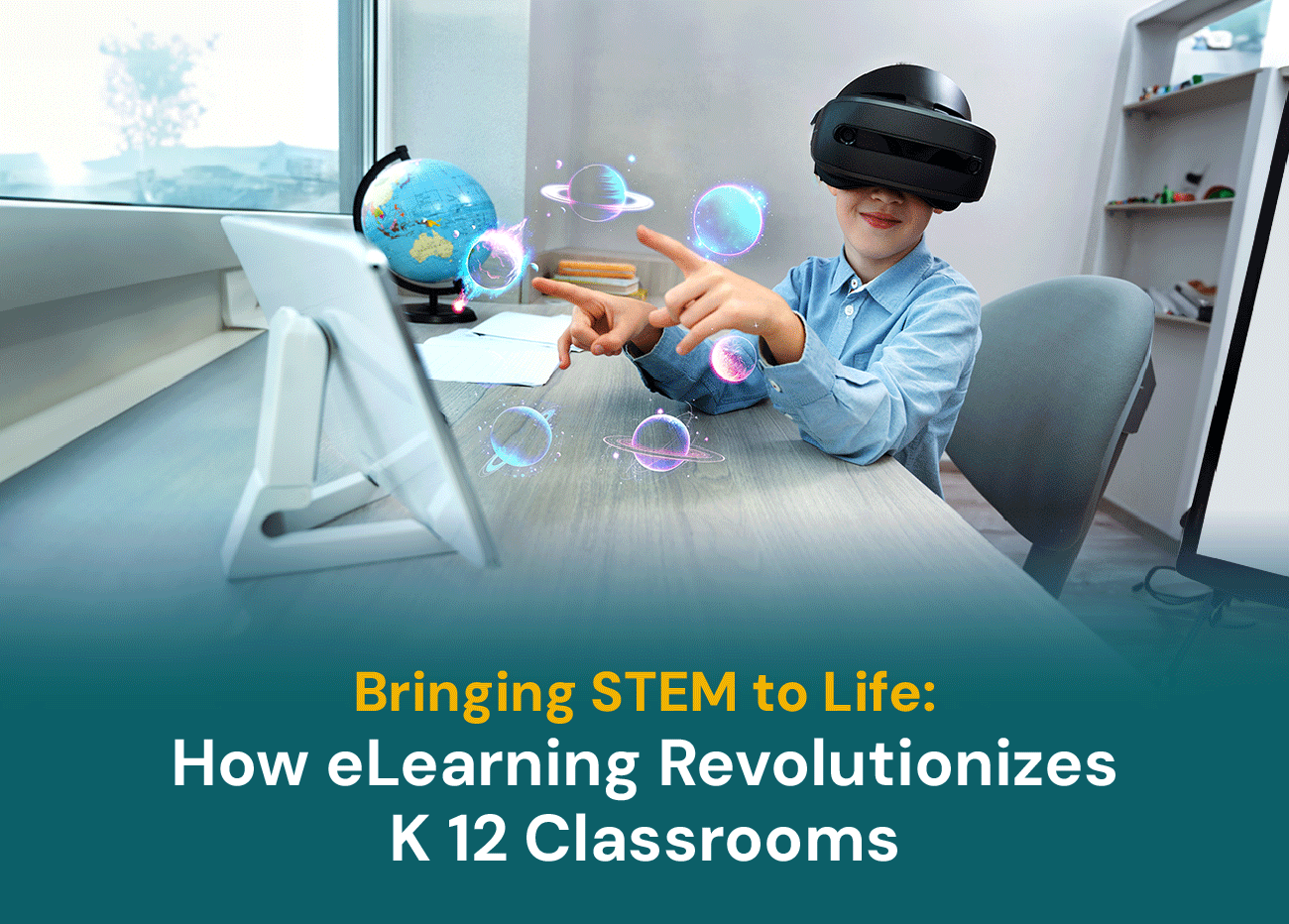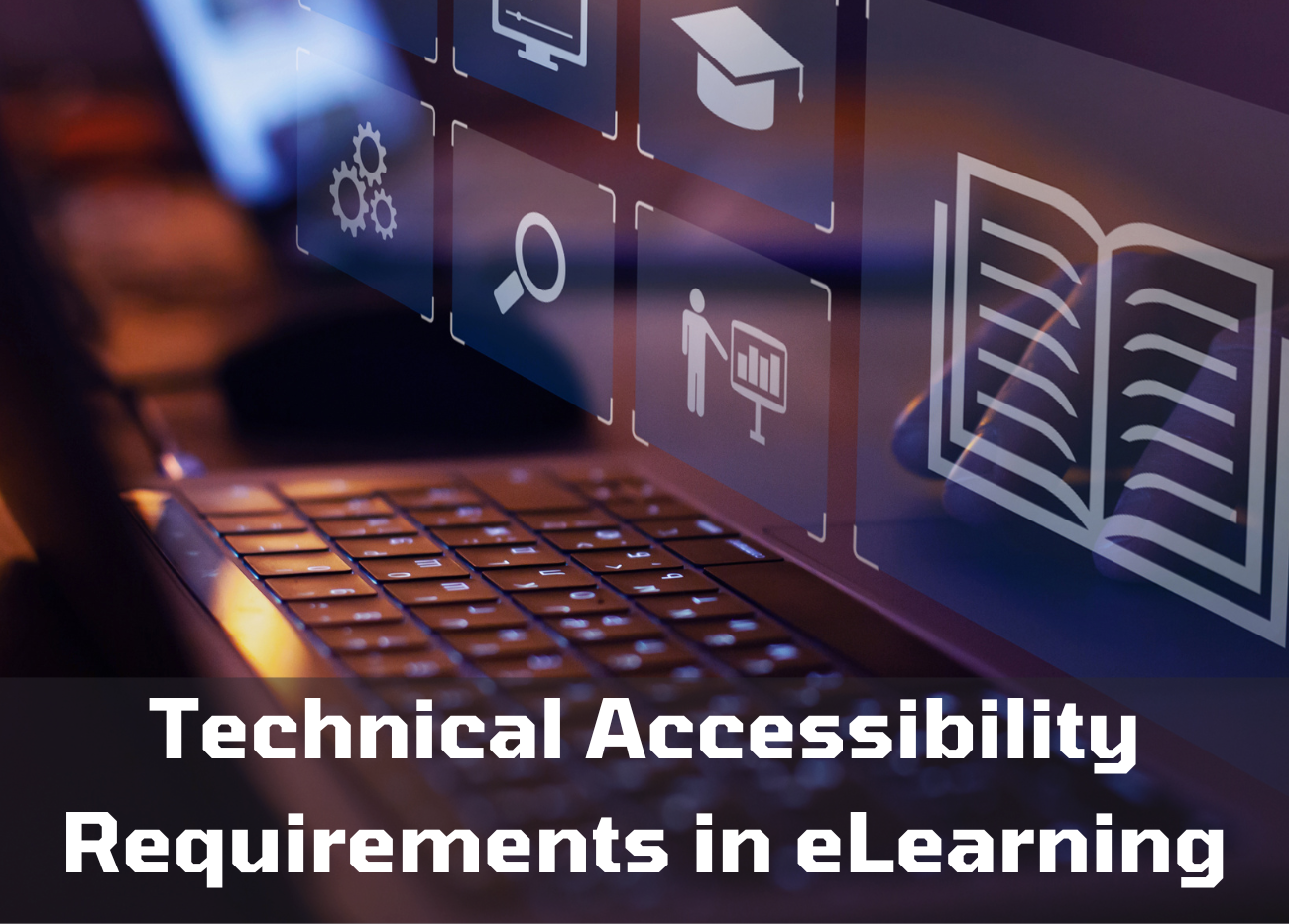Breaking Down Barriers: Making STEM Accessible Through eLearning
STEM (Science, Technology, Engineering, and Mathematics) education is essential for preparing students for future careers in an increasingly technology-driven world. However, many barriers prevent students from fully engaging with STEM subjects—whether it’s a lack of resources, geographic limitations, learning disabilities, or traditional teaching methods that fail to accommodate different learning styles.
eLearning has emerged as a powerful solution to these challenges, breaking down barriers and making STEM education more inclusive, engaging, and accessible for all learners. In this blog, we’ll explore how eLearning is transforming STEM education and ensuring that no student is left behind.
The Barriers to STEM Education
Before diving into solutions, let’s examine the common challenges that hinder STEM education:
1. Limited Access to Quality STEM Resources
Not all schools have access to advanced STEM labs, equipment, or experienced educators, particularly in rural and underserved communities.
2. Learning Differences and Disabilities
Traditional STEM teaching methods often fail to accommodate students with diverse learning needs, including those with dyslexia, ADHD, or visual impairments.
3. Gender and Socioeconomic Gaps
Studies show that girls and students from lower-income backgrounds are less likely to pursue STEM subjects due to social biases, lack of mentorship, and fewer opportunities.
4. Rigid Classroom Structures
Many students struggle with one-size-fits-all STEM education, where lessons move at a fixed pace and may not cater to individual learning speeds or styles.
5. Geographic Barriers
Students in remote areas often miss out on high-quality STEM education due to a lack of infrastructure and qualified teachers.
eLearning directly addresses these challenges, creating more equitable and effective STEM learning experiences.
How eLearning Makes STEM More Accessible
1. Bringing High-Quality STEM Content to Every Student
With eLearning, students can access world-class STEM lessons, virtual labs, and real-world applications, regardless of their location. Platforms like Khan Academy, Coursera, and MIT OpenCourseWare provide free or affordable STEM courses designed by experts, ensuring that every student has access to high-quality education.
2. Personalized Learning Paths for Different Abilities
eLearning platforms use AI-driven adaptive learning systems that tailor content to each student’s pace and skill level. Students who need more time on a concept can revisit lessons, while advanced learners can move ahead without being held back by a rigid curriculum.
3. Assistive Technologies for Inclusive Learning
eLearning platforms integrate accessibility features like:
- Text-to-speech tools for visually impaired students
- Closed captions and transcripts for hearing-impaired learners
- Interactive quizzes and gamification to support students with learning disabilities
This ensures that students with diverse needs can engage with STEM content effectively.
4. Encouraging STEM Participation Among Underrepresented Groups
eLearning provides a supportive and inclusive environment where girls and students from disadvantaged backgrounds can explore STEM subjects without bias. Programs like Girls Who Code and Black Girls Code use online modules to encourage diverse participation in STEM fields.
5. Virtual Labs and Interactive Simulations
Students no longer need access to physical labs to conduct experiments. Virtual labs like PhET Interactive Simulations and Labster allow learners to experiment in a safe, digital environment. These tools help students visualize complex scientific processes, making learning more engaging and effective.
6. Breaking Geographic Barriers with Remote Learning
For students in rural areas, eLearning provides an opportunity to learn from top educators and participate in global STEM competitions. With access to cloud-based platforms and virtual classrooms, students can engage with STEM mentors and collaborate with peers worldwide.
7. Gamification and Engaging STEM Experiences
Gamified eLearning tools like Minecraft: Education Edition, Code.org, and Tynker make STEM learning fun and interactive. When students enjoy the learning process, they are more likely to persist in STEM subjects.
8. Real-World Applications and Career Exposure
eLearning connects students with industry professionals, live webinars, and real-world STEM applications. Platforms like LinkedIn Learning and Google for Education expose students to career paths in engineering, data science, and robotics, inspiring them to pursue STEM careers.
Final Thoughts: The Future of STEM Accessibility
eLearning is revolutionizing STEM education by removing traditional barriers and ensuring that every student—regardless of location, ability, or background—has access to high-quality STEM learning. By leveraging personalized learning, assistive technologies, and interactive experiences, educators can create more inclusive STEM classrooms that inspire the next generation of scientists, engineers, and innovators.
At Mitr Learning & Media, we are committed to developing innovative digital learning solutions that make STEM education accessible to all. If you’re looking to implement cutting-edge eLearning strategies in your institution, let’s connect and explore the possibilities.
What’s Next?
Want to dive deeper? Check out our related blogs:
- Top eLearning Tools Revolutionizing STEM Classrooms
- How Interactive Simulations Make STEM Concepts Come Alive for K12 Students
- Hybrid Classrooms: Blending Traditional and eLearning Approaches for STEM
- Bringing STEM to Life: How eLearning Revolutionizes K12 Classrooms
- The Role of Digital Collaboration Tools in STEM Projects for K12 Students
Let’s work together to make STEM education truly accessible!
- Debdut Pramanickhttps://www.mitrmedia.com/resources/blogs/author/debdutp/
- Debdut Pramanickhttps://www.mitrmedia.com/resources/blogs/author/debdutp/
- Debdut Pramanickhttps://www.mitrmedia.com/resources/blogs/author/debdutp/
- Debdut Pramanickhttps://www.mitrmedia.com/resources/blogs/author/debdutp/




